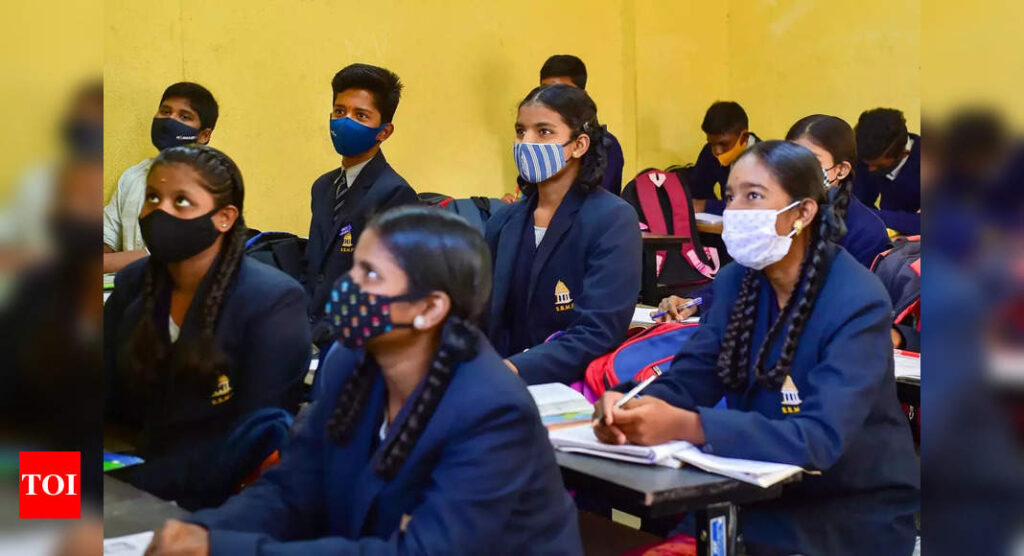By Nafisa Khatoon –
With the growing emphasis on providing a conducive learning environment to children aged between 3-5 years, as suggested in the National Curriculum Framework for Foundational Stage (NCF-FS), the focus on using multiple forms of early learner assessment (ELA) tools has been introduced.
The ELA tools help in assessing the learning outcomes among students and provide feedback to teachers to modify preschool learning environments. However, standardized performance-based assessment tools are not available and are widely used in the Indian education system.
To fix the gap, Azim Premji Foundation has launched a handbook on comprehensive ELA tools to assess the student’s progress in five developmental domains including physical, social, emotional, cognitive, language, and creativity.
“A general routine followed by preschools for assessing the child development process includes anecdotal records and worksheets. Not many standardised ELA tools have been developed for a large population of Indian pre-primary students impacting the improvement of the teaching-learning process,” says Kinnari Pandya, associate professor, Azim Premji University and core team member of the ELA development tool.
“The tool rubrics consider the child development process. It helps the teachers to understand that each student is unique with an individual pace of development in the early years. The teachers must learn to evaluate the effectiveness of teaching on specific tools, so the expected age-specific competencies are demonstrated by little children,” adds Pandya.
The pilot study conducted in Sangareddy district, Telangana confirmed the direct correlation between the quality of preschooling and students’ developmental progress.
“As part of growing up, preschool students pick up few things naturally, but a few learning is based on the environment the child grows. For instance, several aspects of gross motor or social skills need to be taught to students and teachers need to give systematic inputs. They have to conduct sorting, sequencing, classifying, and counting activities in the classroom to enable the holistic development of students,” says Pandya.
The questions and tasks in the ELA tool are contextualized for rural, and semi-rural India, and are also relevant to the urban contexts. So, even Anganwadi workers can participate and carry out the assessment process. Pandya says that the handbook is a source of feedback, and adds “ELA tool is not meant to screen and label children. It is only meant to encourage and provide feedback to teachers and early childhood educators to do better in their role as teachers. They will have the plan to facilitate better learning environments leading to the optimal development of students.”
With the growing emphasis on providing a conducive learning environment to children aged between 3-5 years, as suggested in the National Curriculum Framework for Foundational Stage (NCF-FS), the focus on using multiple forms of early learner assessment (ELA) tools has been introduced.
The ELA tools help in assessing the learning outcomes among students and provide feedback to teachers to modify preschool learning environments. However, standardized performance-based assessment tools are not available and are widely used in the Indian education system.
To fix the gap, Azim Premji Foundation has launched a handbook on comprehensive ELA tools to assess the student’s progress in five developmental domains including physical, social, emotional, cognitive, language, and creativity.
“A general routine followed by preschools for assessing the child development process includes anecdotal records and worksheets. Not many standardised ELA tools have been developed for a large population of Indian pre-primary students impacting the improvement of the teaching-learning process,” says Kinnari Pandya, associate professor, Azim Premji University and core team member of the ELA development tool.
“The tool rubrics consider the child development process. It helps the teachers to understand that each student is unique with an individual pace of development in the early years. The teachers must learn to evaluate the effectiveness of teaching on specific tools, so the expected age-specific competencies are demonstrated by little children,” adds Pandya.
The pilot study conducted in Sangareddy district, Telangana confirmed the direct correlation between the quality of preschooling and students’ developmental progress.
“As part of growing up, preschool students pick up few things naturally, but a few learning is based on the environment the child grows. For instance, several aspects of gross motor or social skills need to be taught to students and teachers need to give systematic inputs. They have to conduct sorting, sequencing, classifying, and counting activities in the classroom to enable the holistic development of students,” says Pandya.
The questions and tasks in the ELA tool are contextualized for rural, and semi-rural India, and are also relevant to the urban contexts. So, even Anganwadi workers can participate and carry out the assessment process. Pandya says that the handbook is a source of feedback, and adds “ELA tool is not meant to screen and label children. It is only meant to encourage and provide feedback to teachers and early childhood educators to do better in their role as teachers. They will have the plan to facilitate better learning environments leading to the optimal development of students.”

